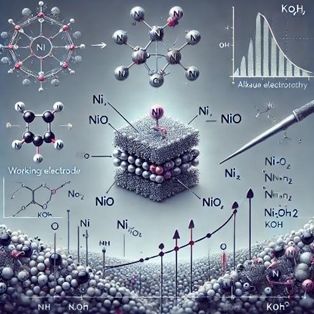The chemical industry is transitioning toward more environmentally friendly processes, with large-scale operations redesigned to run on electricity. However, specific sectors remain largely “untouched” and still require transformation. This is particularly true for producing specialty chemicals composed of small molecular units. To enable this transition, electrocatalysts must advance to facilitate these crucial chemical transformations.
Inspired by the current needs, the current project is open; project description:
Transition metal oxides play a crucial role in catalysis, particularly in electrochemistry. Nickel (Ni) and its oxides/hydroxides (NiO and Ni(OH)₂) have emerged as promising materials for energy conversion, electrocatalysis, and, more recently discovered in our group, for the electrosynthesis of molecules such as amino acids. This assignment is inspired by recent studies [1] on metal oxides and aims to explore using biomass waste models derived from fruits or vegetables. These biomass models will be upcycled into higher-value chemicals, such as amino acids—essential molecular building blocks of life

Assignment
1. Synthesis & characterization: Investigate the formation of nickel oxides via electrochemical deposition or direct oxidation in alkaline conditions.
2. Electrosynthesis: Evaluate the role of Ni, NiO, or Ni(OH)2 during Alanine electrosynthesis.
3. Amino acid characterization: This involves estimating product formation and evaluating amino acid selectivity (faradaic efficiency) using analytical techniques like NMR.
4. Electrochemical Analysis: Study the redox of Ni species using cyclic voltammetry (CV) and electrochemical impedance spectroscopy (EIS).
5. Material Stability: Assess the long-term electrochemical stability of Ni-based oxides.
References
1. J.-C. Galas, A.-M. Haghiri-Gosnet, and A. Estévez-Torres, A nanoliter-scale open chemical reactor, Lab Chip 13, 415 (2013).
2. Schoppink, J., & Fernandez Rivas, D. (2022). Jet injectors: Perspectives for small volume delivery with lasers. In Advanced Drug Delivery Reviews (Vol. 182). Elsevier B.V.
Contact information
Bahar Atik-Eroglu (b.atikeroglu@utwente.nl)
